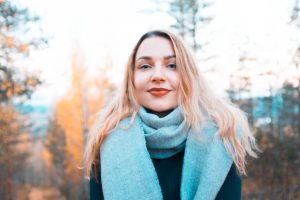SENSORY WALK in “Why the world needs anthropologists” – conference, Lisboa, Portugal

I arrived on Wednesday the 24th of October 2018 to Lisbon. The next day we met with my colleague and SENSOTRA’s Slovenian expert prof. Rajko Muršič and with some local people from the WWNA conference to plan our sensory walk here in Lisboa.
We decided to perform the walk near ISCTE where our workshop would take place on Saturday. It was a special place in many ways but especially due to a curiosity that there was an airplane flying over this place like every 20-40 min. You can hear it in the end of this video taken from our walk.
The workshop we were going to held was W7: Sensory walk.
What is a sensory walk?
The method of sensory walk as such is quite simple. It is a group version of Helmi Järviluoma’s method sensobiographic walk where a path meaningful to one person is chosen. While walking, silently, we observed the path with all our senses. As an artistic practice, the sensory memory walk relates to site-specific art. The method has multiple roots. In its current form the method was developed in the course of the ethnographic work done for the Acoustic Environments in Change (AEC) research project, which charted local European soundscapes.
We had 9 participants which was quite good number of people to walk in the city as a silent group. I felt save with that number, because the more people we have the more risky it gets with for example cars and traffic.
When Saturday came we realized we will have a very strong wind which will surely affect the experience of our walk.
This walk was related to our project SENSOTRA on Sensory Transformations, which seeks to produce new understanding on how different generations relate to and experience their environment. Furthermore, the project is interested in knowing what roles technology and different technological devices play in people’s lives and how they affect their perceptions thereof.
Text by Sonja Pöllänen
Sonja is a project researcher in SENSOTRA and also a PhD student in cultural anthropology at the University of Eastern Finland.
Photo: Tuomas Partanen
Videos from the sensory walks: Andreja Bahar Muršič